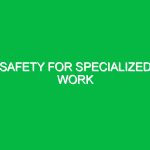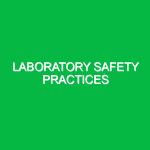Welding and hot work are essential processes across various industries, from construction to manufacturing. However, the risks associated with these activities can be substantial. Understanding the concept of safety in welding and hot work is crucial for protecting workers and the environment. This article delves into the myriad hazards, safety precautions, and regulations that govern these practices, ensuring that both novices and seasoned professionals grasp the importance of safety in their work environments.
Defining Safety in Welding and Hot Work
Safety in welding and hot work refers to the protocols, practices, and regulations that aim to minimize risks associated with heat-producing activities. These processes can include welding, cutting, grinding, and any other activity that involves open flames or high temperatures. The relevance of safety in these contexts cannot be overstated; mishaps can lead to severe injuries, fatalities, and significant property damage. Moreover, they can result in legal repercussions for companies that fail to adhere to safety standards.
Identifying Hazards and Risks in Welding and Hot Work
Understanding potential hazards is the first step in mitigating risks. The dangers associated with welding and hot work can be categorized into several key areas:
1. Fire Hazards
One of the most significant risks in welding and hot work is fire. Sparks produced during welding can ignite flammable materials within proximity, leading to uncontrolled fires. According to the National Fire Protection Association (NFPA), nearly half of all fires in manufacturing facilities are attributed to hot work activities.
2. Chemical Exposure
Welders often encounter hazardous fumes and gases, which can cause short- and long-term health issues. For instance, materials such as zinc, lead, and cadmium may release toxic vapors when heated. Prolonged exposure can lead to respiratory problems and other severe health conditions.
3. Electrical Hazards
Welding equipment operates at high voltages, posing risks of electrical shock. Faulty equipment or inadequate grounding can exacerbate these dangers. It’s crucial to understand the electrical systems in use and ensure that all equipment is maintained properly.
4. Physical Injuries
Welding involves heavy machinery and tools, increasing the risk of cuts, burns, and crush injuries. Even a momentary lapse in focus can lead to accidents that may have lifelong consequences.
5. Noise Exposure
The noise generated during welding operations can be substantial, potentially leading to hearing loss over time. Protective measures must be in place to protect workers from prolonged exposure.
Best Practices and Safety Precautions
With an understanding of potential hazards, implementing safety precautions becomes paramount. Here are several best practices that can significantly enhance safety in welding and hot work environments:
1. Conduct a Risk Assessment
Before commencing any welding or hot work, conduct a thorough risk assessment. Identify potential hazards specific to the environment and the type of work being performed. This assessment should involve all team members, allowing them to voice concerns and contribute to safety planning.
2. Implement Proper Training
All personnel involved in welding and hot work should receive comprehensive training. This training should cover not only the technical aspects of operating equipment but also the safety protocols that must be followed. Regular refresher courses can help reinforce these principles.
3. Use Personal Protective Equipment (PPE)
Welders must wear appropriate PPE, including helmets with protective visors, gloves, flame-resistant clothing, and steel-toed boots. Each piece of equipment serves a specific purpose in safeguarding against burns, electrical shocks, and impacts. For instance, a high-quality welding helmet protects the eyes from harmful UV rays and flying debris.
4. Maintain a Safe Work Area
Ensure that the work area is clean and free from flammable materials. Establish a designated hot work zone and use fire-resistant barriers to protect surrounding areas. Regularly inspect the workspace to identify and eliminate potential hazards.
5. Employ Fire Watchers
When performing hot work in areas where flammable materials are present, designate a fire watcher. This individual should be responsible for monitoring the area for signs of fire and ensuring that appropriate fire extinguishing equipment is readily available.
6. Ensure Proper Ventilation
To mitigate the risks associated with toxic fumes, ensure that the workspace is well-ventilated. Use exhaust systems or fans to remove harmful gases and vapors from the area. If necessary, invest in respiratory protection to safeguard against inhalation of hazardous materials.
7. Regular Equipment Maintenance
Regularly inspect and maintain welding equipment to ensure it operates safely. This includes checking for damaged cables, leaks, and other potential issues. Keeping equipment in top condition reduces the risk of accidents and enhances overall safety.
Understanding Regulations and Standards
Several regulations govern safety in welding and hot work, providing a framework for best practices. Some of the key standards include:
1. Occupational Safety and Health Administration (OSHA)
In the United States, OSHA sets forth regulations specifically addressing welding and hot work safety. These regulations include guidelines on PPE, ventilation, and fire safety protocols. Employers are responsible for ensuring that their workers are aware of and comply with these regulations.
2. National Fire Protection Association (NFPA)
The NFPA publishes standards that address fire safety in hot work operations. Their guidelines provide comprehensive recommendations for reducing fire risks, including proper storage of flammable materials and the use of fire-resistant barriers.
3. American National Standards Institute (ANSI)
ANSI develops standards related to safety equipment and practices in welding. Compliance with these standards ensures that workers have the necessary protective gear to perform their duties safely.
Conclusion: Prioritizing Safety in Welding and Hot Work
Safety in welding and hot work is not merely a set of guidelines; it is a fundamental aspect of any operation that involves heat and risk. By recognizing hazards, implementing effective safety measures, and adhering to regulations, workers can significantly reduce the potential for accidents and injuries. As industries evolve, the commitment to safety must remain steadfast. Organizations must foster a culture where safety is prioritized, ensuring that every worker returns home safely at the end of the day.
In my own experience working in a manufacturing facility, we once had a near-miss incident involving hot work. A welder inadvertently ignited a pile of cardboard boxes nearby. Thanks to the fire watcher’s quick response and the preparedness of the team, the fire was extinguished before it could spread. This experience underscored the importance of vigilance and preparation in ensuring safety. Every member of the team plays a critical role in maintaining a safe working environment.


